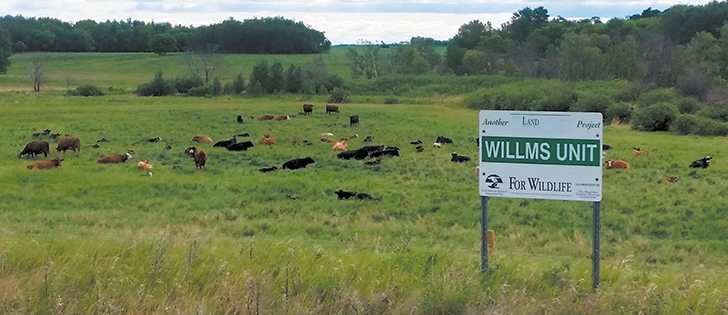Deep blue Manitoba skies, the sun shining brightly causing a buzz of activity with bees and other insects, as the tall prairie grass sways gently to the beat of a soft breeze.
This is often the scene cattle producers come upon when they venture out on their regular trips to check on their herds grazing on the prairie land.
The setting is simple at first glance, but there’s so much more beneath the surface. Upon further examination, you might see a beaver hut, maybe discover a fox hole and certainly pick out an abundance of waterfowl nests, perhaps those of a mallard duck or a sharp-tailed grouse.
Read Also

Farmer ownership cannot be seen as a guarantee for success
It’s a powerful movement when people band together to form co-ops and credit unions, but member ownership is no guarantee of success.
It’s likely that the habitat specialists for the Manitoba Habitat Heritage Corp. will notice the wildlife, waterfowl and the natural prairie grassland before the cattle or the blue skies.
The MHHC has 14,000 acres of land throughout the Manitoba that it manages primarily for the purpose of conserving, restoring and enhancing the natural habitats for fish, wildlife and waterfowl.
Certain properties, however do allow for cultivation, haying and cattle grazing.
In the Minnedosa area, 16 properties are managed by MHHC, but the 320 acre Wilmms property is one that has recently been set up to allow for grazing.
Wes Pankratz, a habitat specialist with MHHC, said this is a relatively new initiative in this area, but one that has merit for the corporation, the cattle producer, the land and the animals.
“I think grazing cattle can be a win-win-win situation for the wildlife, the pasture health and the weight gains of the herd. However, there has to be a balance. If we graze only for weight gains and production, then the wildlife habitat could suffer. Conversely, if we graze only for wildlife, the other two could suffer,” said Pankratz.
MHHC properties in Minnedosa and the surrounding areas have been historically used for hay production, while others have sat idle for decades. Exporting hay and nutrients has taken its toll and without the animal impact and nutrient cycling, the soils and plants become limited in their ability to function.
Managed grazing can improve soil and plant growth. The impact, through proper grazing, will improve soil fertility, increase the grass stand and allow the soil to sequester carbon, infiltrate moisture and recycle nutrients.
“We’re pleased to be able to provide much-needed pasture to a shrinking land base for cattle producers. Plus, using some of the land for agricultural purposes provides MHHC with additional revenue to help offset taxes and other land management expenses,” said Pankratz.
The Willms property has a number of natural features that made preparing it for cattle grazing a challenge. Hills, ravines, beaver dams, sloughs, wooded areas and heavy bush required MHHC to fence the land to protect the natural landscape as much as possible.
“With input from the producer, we used two-strand high tensile fence, which lends itself to having curves in it to avoid or go around sensitive or difficult areas. This is opposed to straight-line, barbed-wire fencing. We fenced off the larger 20-acre wetland including the beaver ponds. The sensitive riparian areas were also fenced in a way that allows for a bit more control over how long and when they are to be grazed,” said Pankratz.
So, while there are many goals and desired outcomes that come into play when managing land to maintain its natural landscape, projects such as this are generally worth the effort. There’s not only a benefit to the environment as a whole, but it also helps maintain a healthy home for domesticated animals, as well as wildlife.















